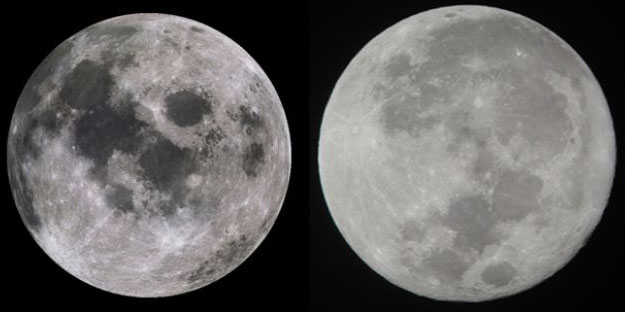Earth has more than one moon?
In a paper called "The Number of Earth's Natural Satellites," astronomers say that the Earth has a second moon at certain times.
>>>The moon is getting smaller
Although these are only small moons, the scientific significance of this discovery is truly phenomenal. Think about this: instead of sending adventurers to asteroids, we now know there are planets around Earth's orbit, studying these planets in the solar system will easier.
Mikael Granvik, Jeremie Vaubaillon and Robert Jedicke from Cornell University calculated the number of natural satellites flying around the Earth. These moons secretly came and went quietly without notice, but at least once they discovered. In fact, their calculations were confirmed by a previous observation: a white titanium object was discovered orbiting the earth when surveyed Catalina, Arizona in 2006.

The result we obtained is consistent with the 2006 planet RH120, a few meter diameter object was recorded for about a year starting in June 2006. This is essentially a small asteroid attracted by Earth's gravitational field. This planet rotates like a second moon until 2007, when it leaves the orbit of our planet. This study proves that, even when not easily detected, these small moons come and go often, around the Earth for about 10 months and then disappear.
However, how often do these 'temporary moons' appear? According to scientists, this phenomenon occurs quite often. "At any time, at least one natural satellite with a diameter of 1 meter orbits the Earth" - Granvik, Jeremie Vaubaillon and Robert Jedicke wrote in online physics magazine ArXiv.org. In other words, at this time, our planet may be having a secret moon orbiting around.
Since there are always small moons flying around the Earth, astronomers can study to detect them. Once discovered, we could send some astronauts up there to analyze it instead of having to send an entire crew to a distant planet. Researching information about the solar system by tracking small planets flying around the Earth really saves a lot of costs.
- The moon is separated from Earth?
- Photo: Manually watch the biggest moon in 20 years
- Does the Moon have its own moon? And you will be surprised with its name!
- At the time of dinosaurs, volcanoes on the Moon used to work?
- What happens if the Moon falls to Earth?
- 'Super moon' is about to appear
- The Moon will collide with the Earth after 65 billion years
- Decode the phenomenon of the moon
- The Earth's Moon is a giant platinum storehouse?
- New hypothesis about the origin of the Moon
- 50 interesting facts about the moon
- The violent evolution of the Moon
 Van Allen's belt and evidence that the Apollo 11 mission to the Moon was myth
Van Allen's belt and evidence that the Apollo 11 mission to the Moon was myth The levels of civilization in the universe (Kardashev scale)
The levels of civilization in the universe (Kardashev scale) Today Mars, the sun and the Earth are aligned
Today Mars, the sun and the Earth are aligned The Amazon owner announced a secret plan to build a space base for thousands of people
The Amazon owner announced a secret plan to build a space base for thousands of people